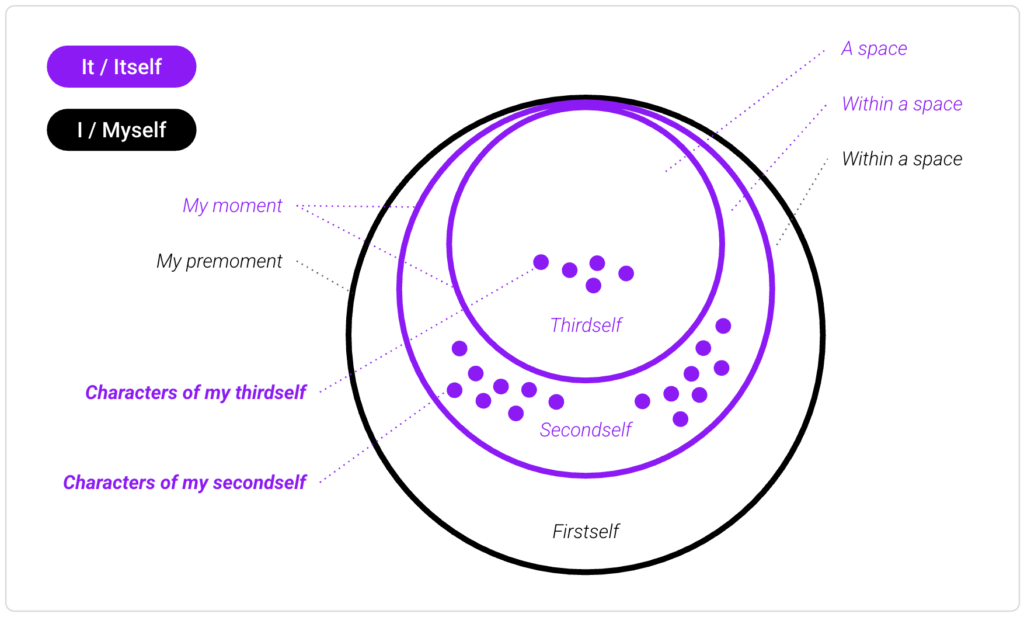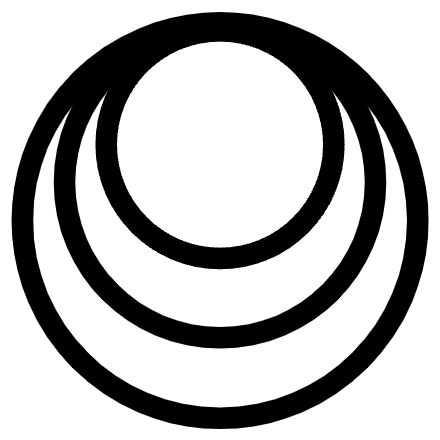In this incantation, I confront the division of my identity into “I” and “It,” seeking to understand their nature and distinctions. Through journaling and self-inquiry, I realize that my experience is shaped by a wounded perspective—one that mistakes localized suffering for my entire existence. “It” is the part that wakes, works, and suffers, caught in temporary pleasures and chronic pain. By stepping back and reclaiming my true, larger self, I see how my Triself Model provides clarity. My awareness shifts, revealing that “It” has dominated my focus, yet remains only a fragment of my greater being.
With the division of my identity into two parts — “I” and “It” — I have to confront a new challenge: what are they? How are they different from one another? My journaling and incantations over the past week since I introduced it reveal my struggle. Fortunately, the Triself Model still works, and in fact the division helps settle something that long plagued me: direct visualization. The triself model always made sense and I could see how it all fit together; but how does it layer over to my actual experience? Now I can answer that.

If my leg hurts, do I believe I am the leg that is hurting? Do I wake up believing that I am a painful leg among other painful legs? Do I forget the body to which the leg is attached? If I fall into the swirling waters do I wake up believing that I am the collection of experiences of being tossed around by the currents and eddies of the waters I have fallen into? Do I forget who I was before I fell into the water? Only if it has been forgotten who I am and was before falling into the water, and behind the painful, hurting leg.
This character I play when I awaken is the wounded part of a greater body. However, the pain is so great that I focus on it to the exclusion of everything else. To reverse this I must step back from the narrow fixation on the wound, and restore my true perspective of my greater being. I must differentiate between my true and total “I” and the small, localized, hurting part of my body, or “It”. It awakens. It drinks coffee in the morning. It sits down in Its chair and works. It owns a company and employs people. It has financial obligations. It has relationships with people. It projects secondself thoughts and thirdself spaces. It has a dog, and It eats lunch at 1pm every day. It writes these journals, and It lives in the Himalayas. It has goals in this awakening — and It is also becoming self-aware and accepting that It is the problem. All these experiences, preferences, desires, and relationships are constrained entirely within Its narrow experience.
What I consider to be “myself” when I awaken is a collection of varying types of pain. The pleasures It feels are merely temporary respites from the chronic and acute pain It experiences from the moment It awakens. Every moment of Its awareness is a form of suffering in one form or another for the simple reason that It knows there is something wrong, and It yearns to heal from that. In search of the respite It always chooses transitory relief over permanent and lasting release. It searches for balm for Its pain without ever solving the underlying wound. Relief is a momentary balm, and nothing ore.
Combined, my secondself and thirdself form my “Itself”; they are “It”. It is a very small part of Me that has captured all of My attention.
…
